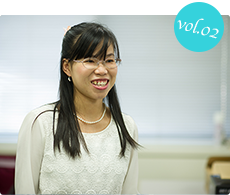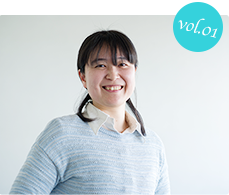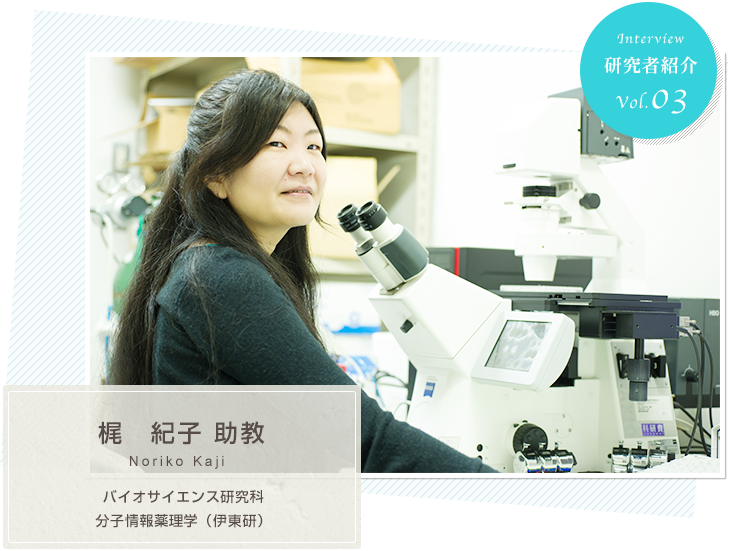
![]()
Ph.D. from the Graduate School of Life Sciences, Tohoku University. Specialized in molecular analysis of signal transduction.
My path to becoming a researcher and the research environment at NAIST
I did not intend to become a researcher when I was a child, but I was interested in biology, so I enrolled in the Department of Biology, Faculty of Science, Tohoku University. In my fourth year, I joined a cell biology laboratory, where I observed cells under a microscope for the first time and found research interesting. The cytoskeleton is a skeleton that supports cells within cells, but unlike the body's bones, it dynamically stretches and contracts. Cells move and divide when the structure of the cytoskeleton is properly controlled, and I was fascinated by observing the cytoskeleton, cell movement, and cell division.
I was fascinated by observing the cytoskeleton, cell movement and division, and so on. I thought I would go to graduate school and get a job after I got my master's degree, but I felt the joy of research because I could discover new things that nobody knew about yet. I decided that I wanted to continue my research, so I continued with my Ph.D. I stayed in the U.S. for four and a half years as a postdoctoral fellow.
I then returned to Tohoku University as an assistant professor, and a year later I became an assistant professor at Nara Institute of Science and Technology (NAIST). I think Nara Institute of Science and Technology (NAIST) is a good research environment because of its shared facilities and equipment. We have sequencers, microscopes, and other equipment that we can use when we want to do experiments, so when we want to start something new, we don't have to prepare it from scratch. It is also nice that there are refreshment areas on each floor with desks, chairs and simple kitchens. You don't see that very often at other universities. Students can prepare lunch here or practice their presentations by projecting slides on the wall. Today, all the master's thesis presentations are over, so we have a party here to celebrate.
Research and education
I go to work in the lab at 9:30 in the morning. From then until 6:00 p.m. is my core time, but I rarely go home at 6:00 p.m. and often stay until around 8:00 or 9:00 p.m. Some students stay behind to do experiments, and I was especially late before my master's thesis.
In the lab, we share a staff room with a secretary and another assistant professor, where students come to ask questions, discuss, or just have a cup of tea. I also do my own experiments, so I spend my day either in the lab or in the staff room.
Many of the students are graduating with master's degrees, so instead of senior students teaching junior students, there are many situations where I teach them directly. Some international students do not understand Japanese, so we have to communicate in English. The number of students in the program is also large, with 13 M.Sc. students and 8 Ph.D. students, so I spend a lot of time teaching and discussing experiments with students.
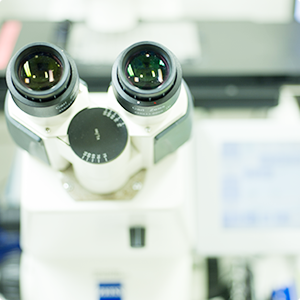
Before coming to NAIST, I had little experience in teaching a large number of students, so I am not used to teaching students, and I feel that it is difficult to produce research results while teaching. However, I can learn a lot from working with many students and doing research together. I am happy when the experiments of the students I work with are successful, and I want to grow with them.
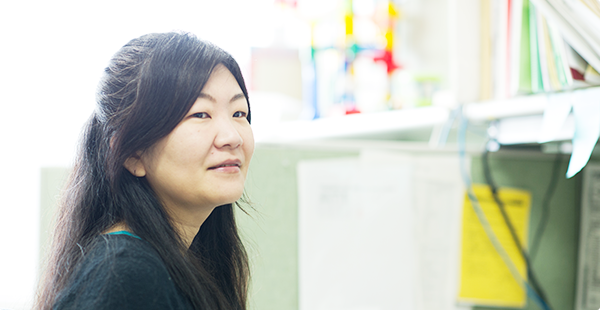
Choosing a lab
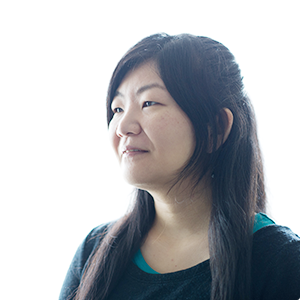
In the labs I have been in, there have been about 20-30% female students. There are relatively more female students in the biological sciences. When I studied abroad in the U.S., more than half of the lab was female.
As for whether being a woman is a disadvantage in research, I personally have not found it to be the case. When I choose a lab, of course I look at the content of the research, but I also look at the atmosphere of the lab. Fortunately, I have met good PIs and labs, and I have not had any difficulties because I am a woman.
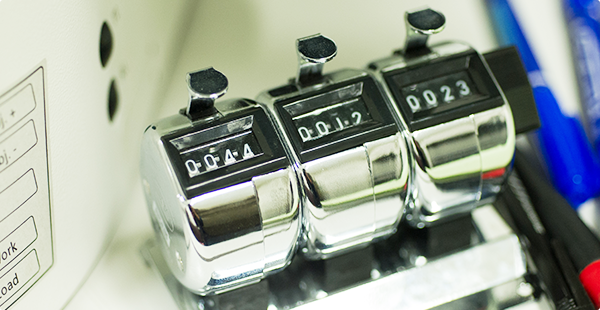
Being a woman and a researcher
I think I have lived my life without feeling anything special about being a woman. When I was a graduate student, I experienced people around me saying things like, "How long are you going to be a student, even though you are a girl? I think I was so attracted to research that I did not care about such things.
However, I think the reason I am not conscious of being a woman in my research and work is because I have not given birth or raised children. Now I am free to use my time for myself, but when I have to balance family and research, I may feel like a woman again.
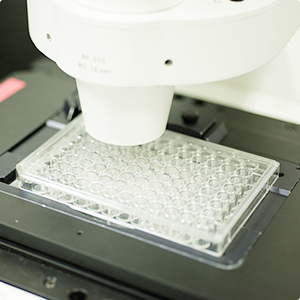
What I would say to students who want to become researchers
As I mentioned earlier, I started pursuing a career in research when I was a senior in college and found it interesting to observe cells. I also found great joy in the fact that even I could discover something new that no one else knew about, and this motivated me to continue my research. I pursued what I thought was mysterious and interesting and moved in the direction that I found enjoyable, and here I am today. When I was thinking about where to go next, someone who was working on a research topic that I found interesting happened to be in the U.S., and I decided to go to the U.S. I was a little apprehensive about living abroad, but once I got there, I found that I was able to have a fulfilling study abroad experience. So I think if you find something that interests you, you should just go for it. Research is fun.
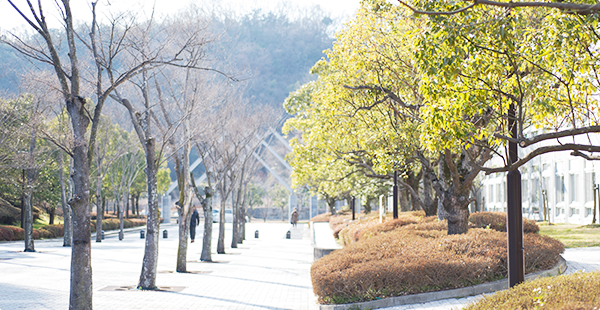
Division of Biological Science, Molecular Informatics and Pharmacology Laboratory(Ito Lab.)
(March, 2017)

-
2017.3 updated
Division of Information Science
-
2017.3 updated
Division of Biological Science






